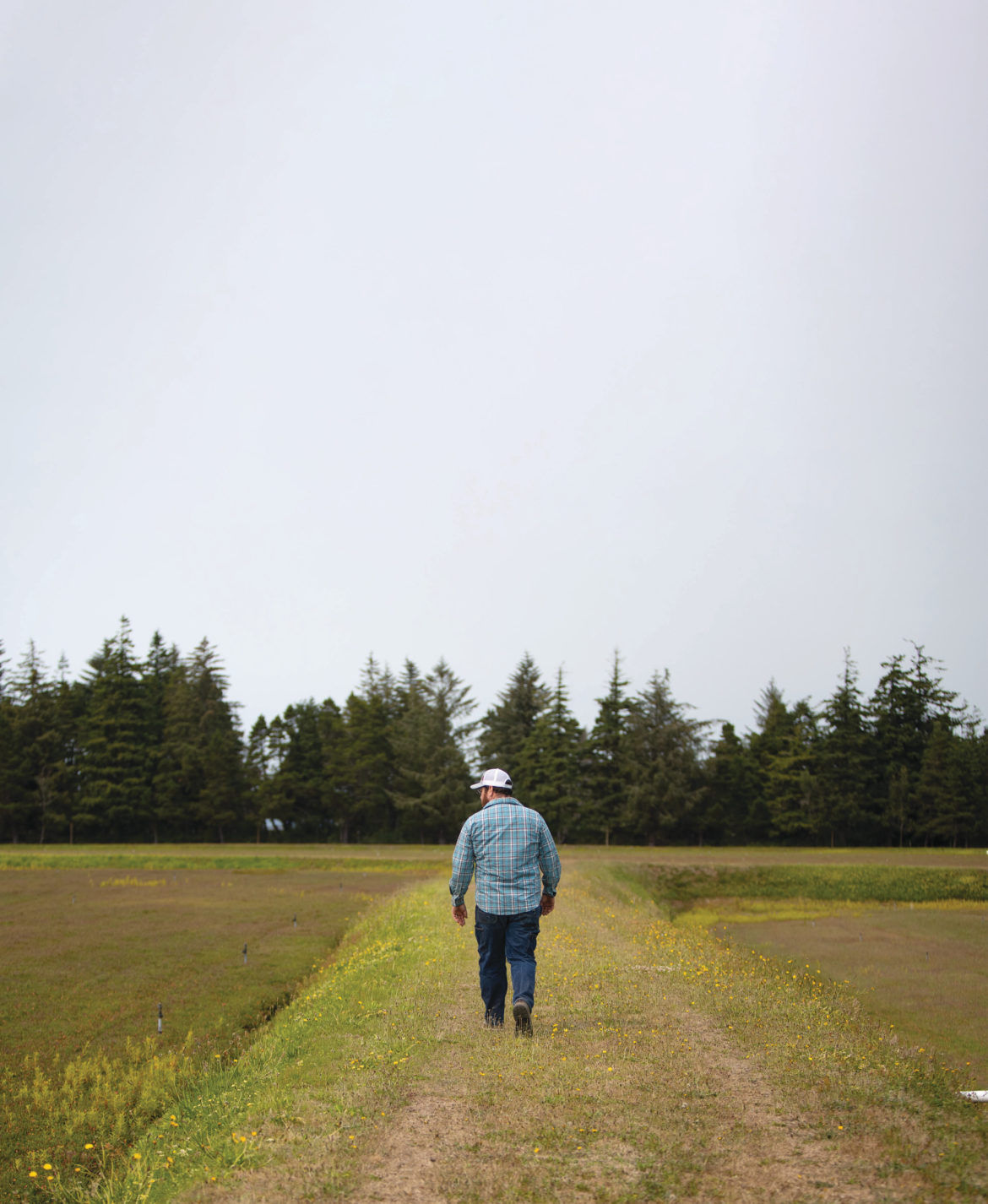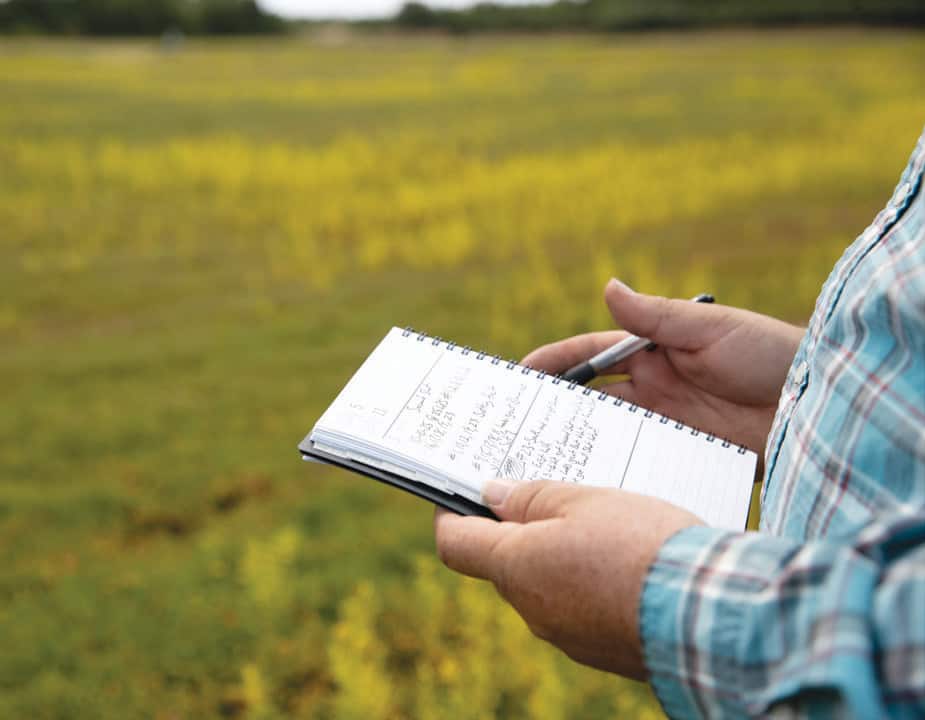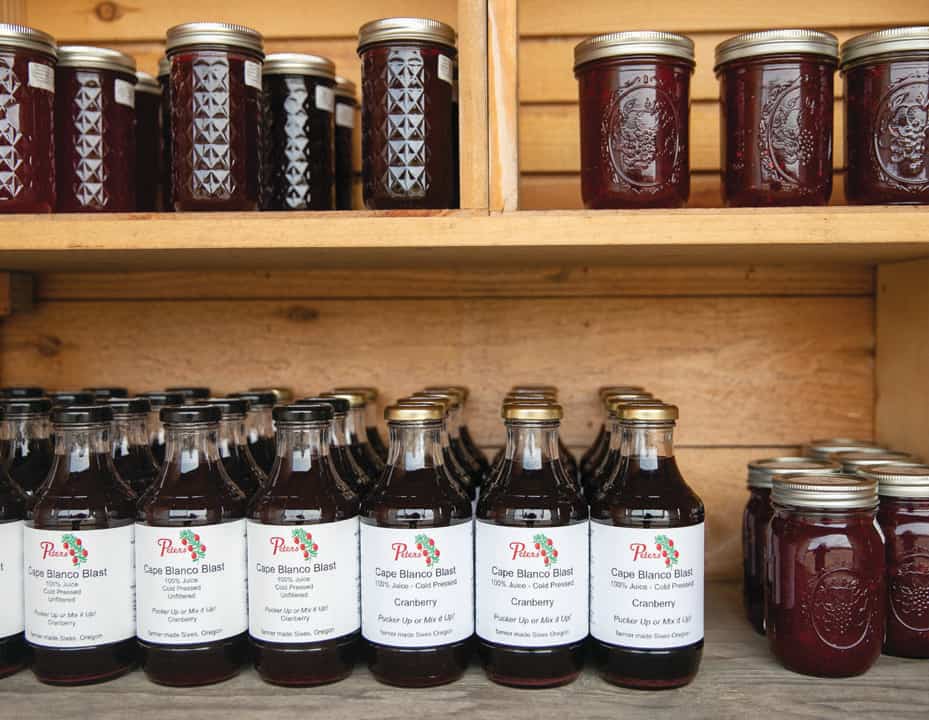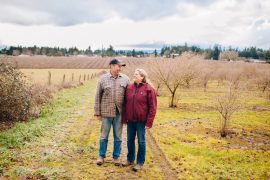Cranberries, as American as Thanksgiving, bring Oregon flavor to fall dishes
written by Sophia McDonald
photography by Amanda Loman
Around the time Portland was welcoming its first train passengers, Morrow County was being incorporated and the Grants Pass Daily Courier was delivering its first newspapers, farmers began forming bogs and filling them with cranberry vines along the southern Oregon coast. These tart treats have been an important agricultural crop in a region which has been better known for animal-based foods such as seafood and dairy since 1885. They also deliver a fine option for locavores who can’t imagine a holiday season or a turkey sandwich without a spoonful of the ruby-red berry sauce.
This thoroughly American berry (one of the few fruits native to North America) has been Whit Peters’ business for most of his life. He and his mother, Sara Osborne, own Peters’ Cranberries in Sixes, about twenty miles south of Bandon. The farm was founded by Peters’ grandfather in the mid-1960s. Grandpa Peters grew up on a farm and later drove a log truck, but when it came time to settle down and have a family, he wanted less time on the road. “This property came up for sale and already had a few bogs, so he built more and spent his whole life building it up,” Peters said. “My dad worked for him, so I grew up down here as a kid on the farm and fell in love with the work and the site and the whole thing. It was just what I wanted to do.”
Today, there are fifty acres of cranberry-producing land on the property. Though bogs can form naturally near the edge of a lake or stream, the Peters family has made their own by using dirt to form three- to four-foot-high dykes to trap water, creating half-acre to five-acre bogs.
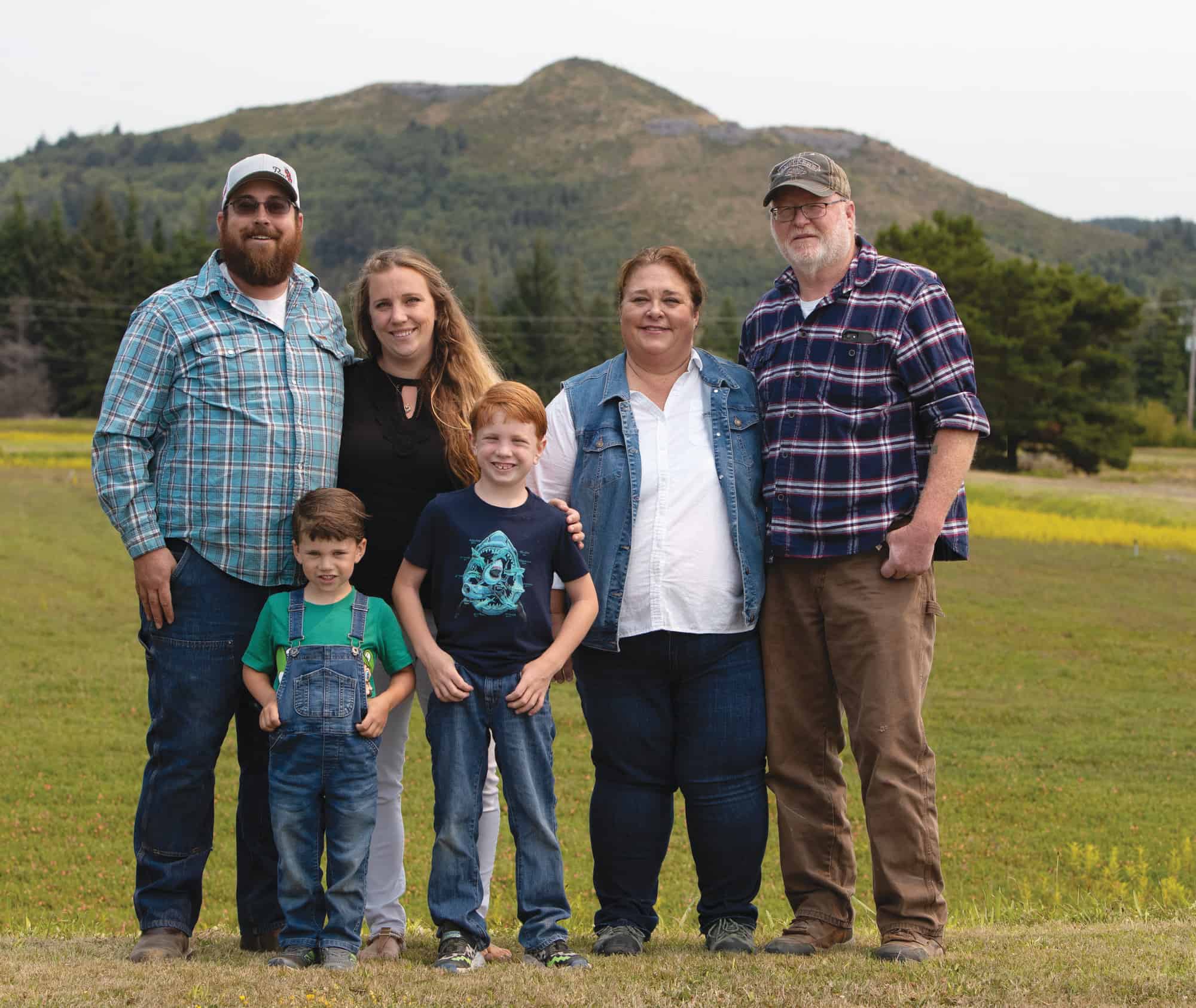
Cranberries are a perennial plant that can live for quite a long time. Some of Peters’ plants are more than forty years old. After harvest, the small green plants turn the color of the berries and lose some of their leaves. “You can tell they’re sleeping,” Peters said. They “wake up” in April and produce a riot of tiny pink flowers in June, and the fruit begins developing soon afterward.
During the summer, Peters is busy managing fertilizing and watering. His job is a lot of “just trying to talk to the darn things and figure out what they want at a given time so I can grow a good, healthy crop.” If he feeds them before they’re hungry, they won’t produce as many berries. (He keeps a growing journal to try and refine the best times to fertilize.) The plants should stay moist during the summer, but not be sopping wet.
Cranberries need a lot of water when they’re ripe and ready to be harvested. In October, Peters floods the bogs and cuts the vines at the base so they float to the top. A machine called a beater (“it looks like a paint roller before the cover is put on”) spins through the vines and gently knocks the fruit from the plants. The floating red berries are corralled with a chain of fat panels called boom boards. The fruit is raked onto a ramp called an elevator and loaded into containers for transport.
In an average year, Peters will produce around a million pounds of fruit—a fraction of the 54 million pounds produced by about 124 mostly family-owned farms on 2,400 acres in Oregon, according to the Cranberry Marketing Committee. Some of the fruit is sold through farmers’ markets or special orders, but most of it goes to large companies that use it for juice, sauce and other products.
The goal is always to finish the harvest right before Thanksgiving, so the family can have some time off during the holidays. As a child, Peters didn’t understand how challenging farming can be. “It’s unpredictable. I can do everything exactly the same, but the weather’s not going to be the same that year,” he said. Market forces, including the ever-changing supply and demand for cranberries, also make the business harder.
But Peters still dreams that his own boys—ages 6 and 4—will carry on the family tradition someday. “Cranberries are an amazing fruit, and I hope people find fun things to do with them all year round, not just Thanksgiving and Christmas,” said the farmer. Peters makes his own juice, jam and chutney which he can store and savor long after the cranberry harvest is over.
Oregon chefs also have suggestions for noshing cranberries no matter the season. Karl Holl, culinary director of Smith Teamaker in Portland and founder of Forager Goods & Company, makes a compound butter with roasted cranberries. He recommended topping steak with it, although it can be used in multiple ways. “It’s especially tasty under the skin of turkey or chicken and over roasted vegetables,” he said.
Michael Zeman, chef at Dóttir, Kex hotel’s restaurant in Portland, grills cranberries and adds them to a salad with beans and smoked carrots. “This salad is all about getting everything ready ahead of time so that when your guests arrive, you can have a beautiful dish on the table in a flash,” he said.
Never one for the conventional, Tyler Malek, co-owner of Salt & Straw, adds cranberry and apple stuffing to ice cream—a thoroughly Oregon way to use a thoroughly Oregon fruit.


